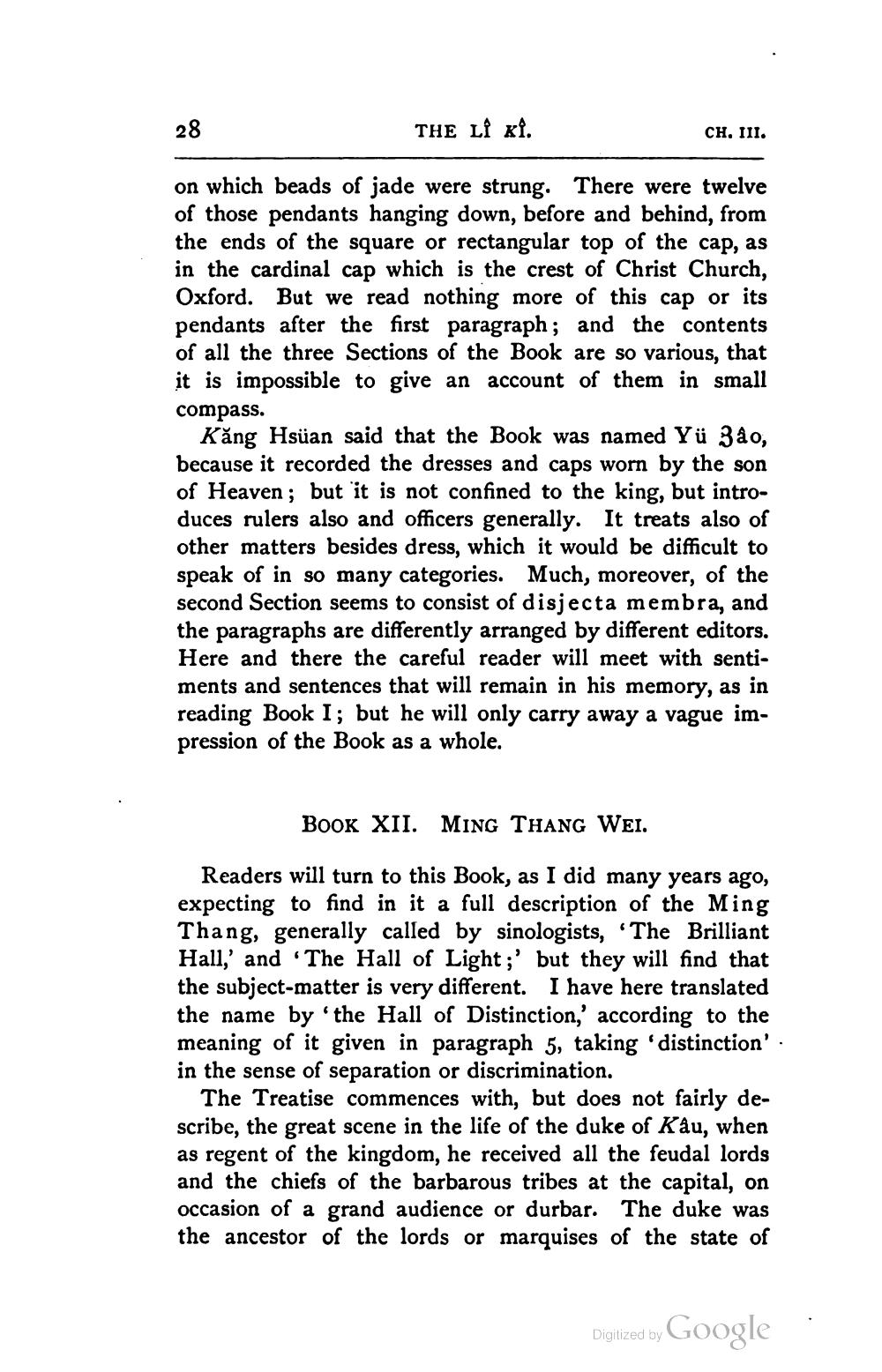________________
28
THE LI Kİ.
on which beads of jade were strung. There were twelve of those pendants hanging down, before and behind, from the ends of the square or rectangular top of the cap, as in the cardinal cap which is the crest of Christ Church, Oxford. But we read nothing more of this cap or its pendants after the first paragraph; and the contents of all the three Sections of the Book are so various, that it is impossible to give an account of them in small
CH. III.
compass.
Kăng Hsuan said that the Book was named Yü 3ão, because it recorded the dresses and caps worn by the son of Heaven; but it is not confined to the king, but introduces rulers also and officers generally. It treats also of other matters besides dress, which it would be difficult to speak of in so many categories. Much, moreover, of the second Section seems to consist of disjecta membra, and the paragraphs are differently arranged by different editors. Here and there the careful reader will meet with sentiments and sentences that will remain in his memory, as in reading Book I; but he will only carry away a vague impression of the Book as a whole.
BOOK XII. MING THANG WEI.
Readers will turn to this Book, as I did many years ago, expecting to find in it a full description of the Ming Thang, generally called by sinologists, 'The Brilliant Hall,' and 'The Hall of Light;' but they will find that the subject-matter is very different. I have here translated the name by 'the Hall of Distinction,' according to the meaning of it given in paragraph 5, taking 'distinction' in the sense of separation or discrimination.
The Treatise commences with, but does not fairly describe, the great scene in the life of the duke of Kâu, when as regent of the kingdom, he received all the feudal lords and the chiefs of the barbarous tribes at the capital, on occasion of a grand audience or durbar. The duke was the ancestor of the lords or marquises of the state of
Digitized by Google




